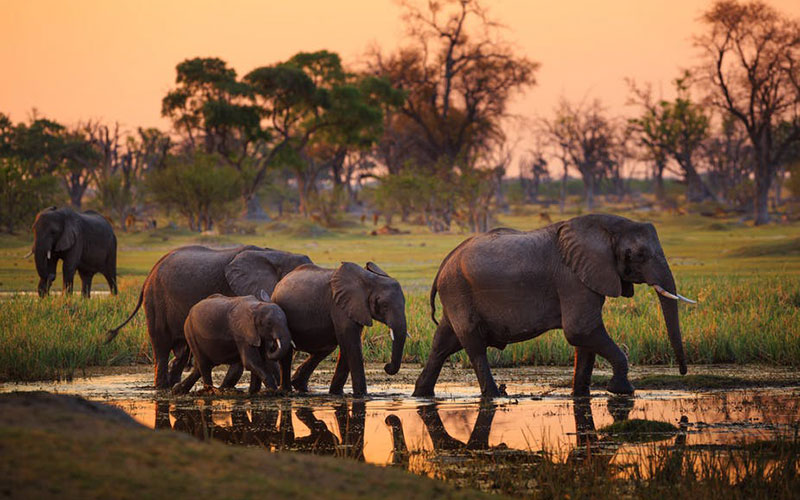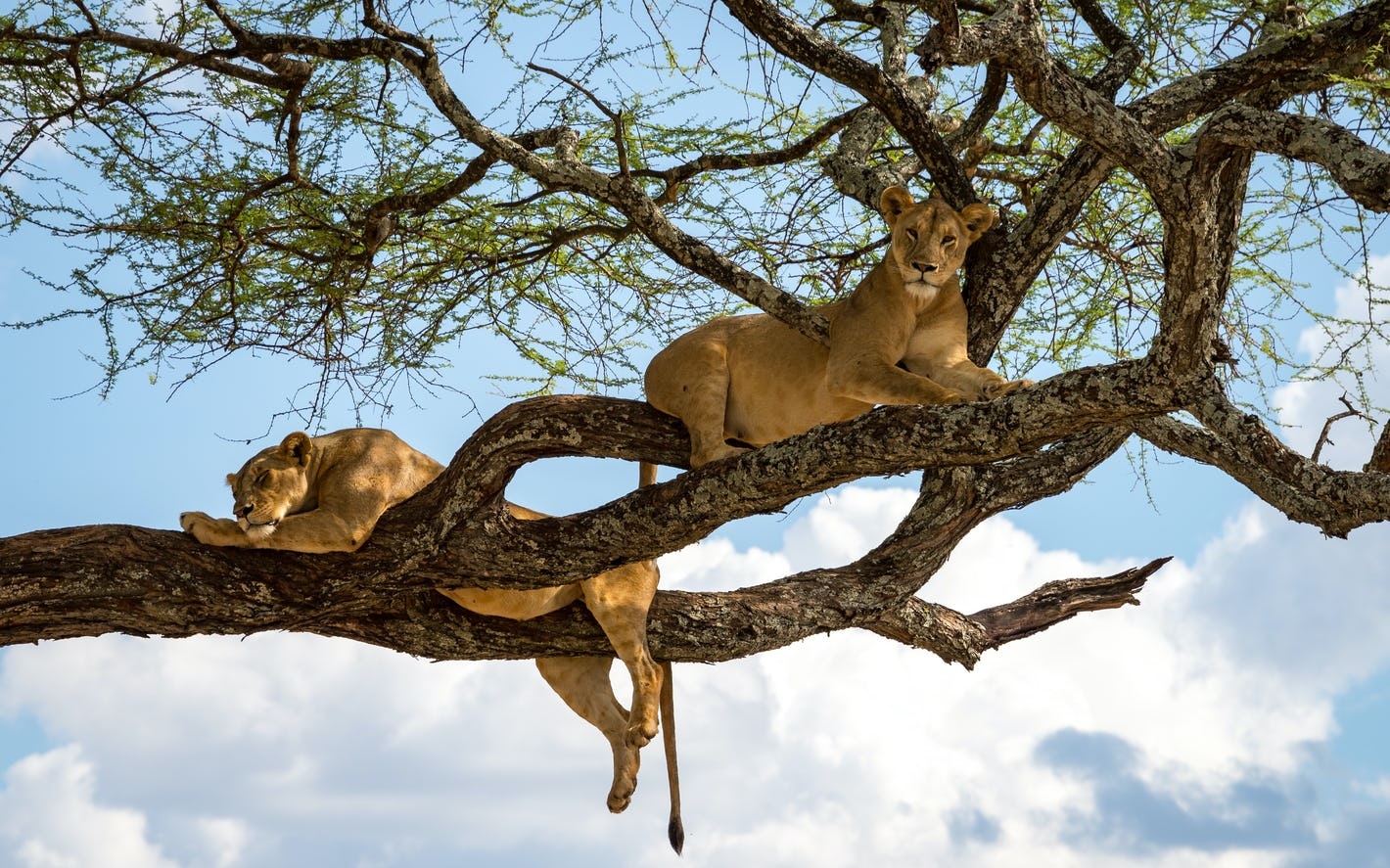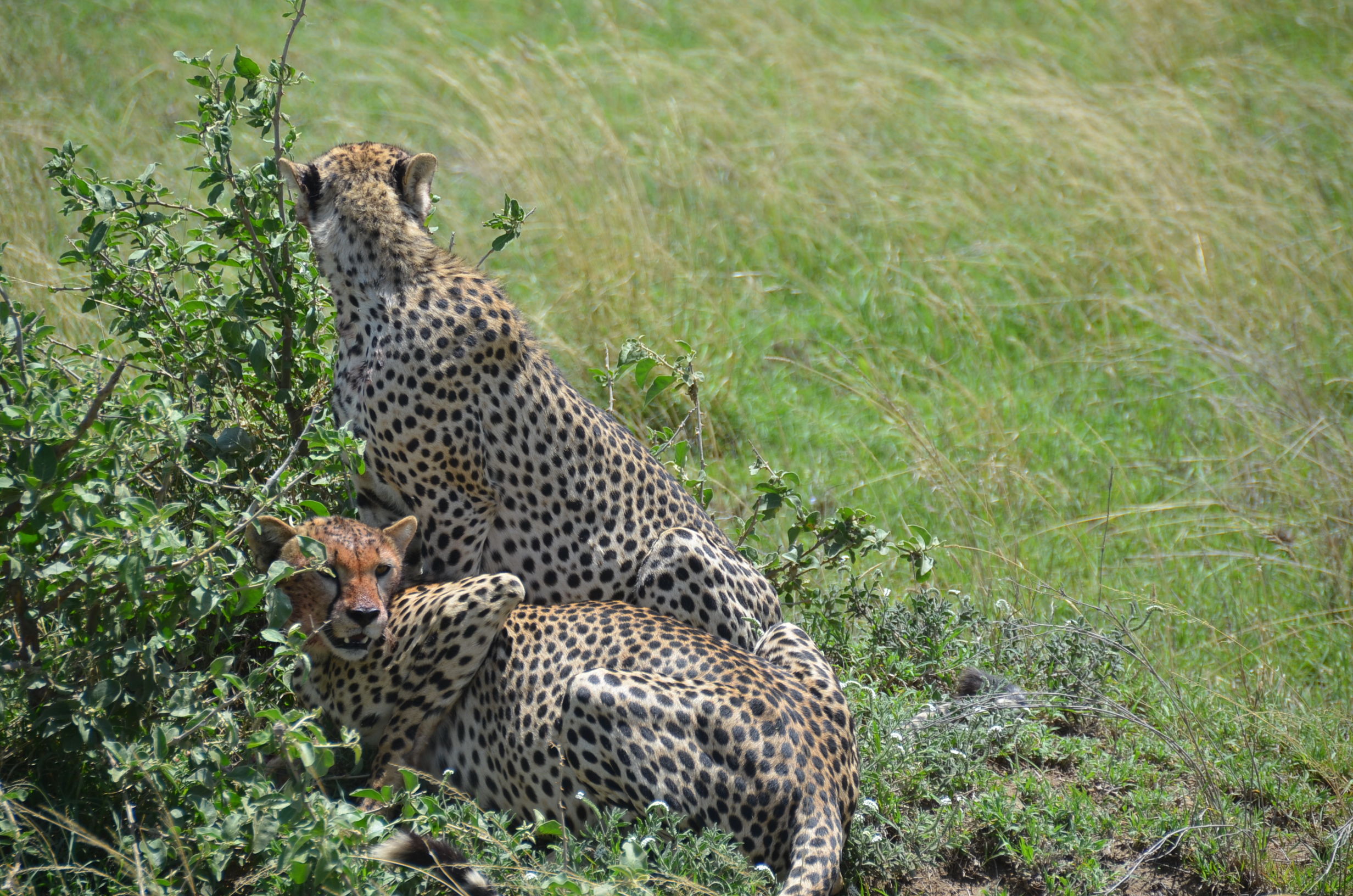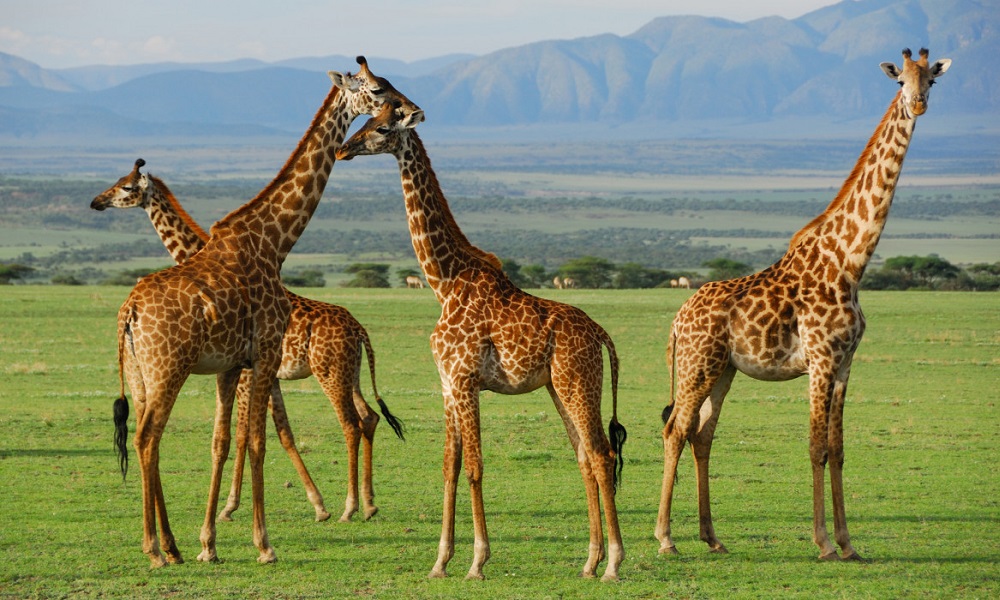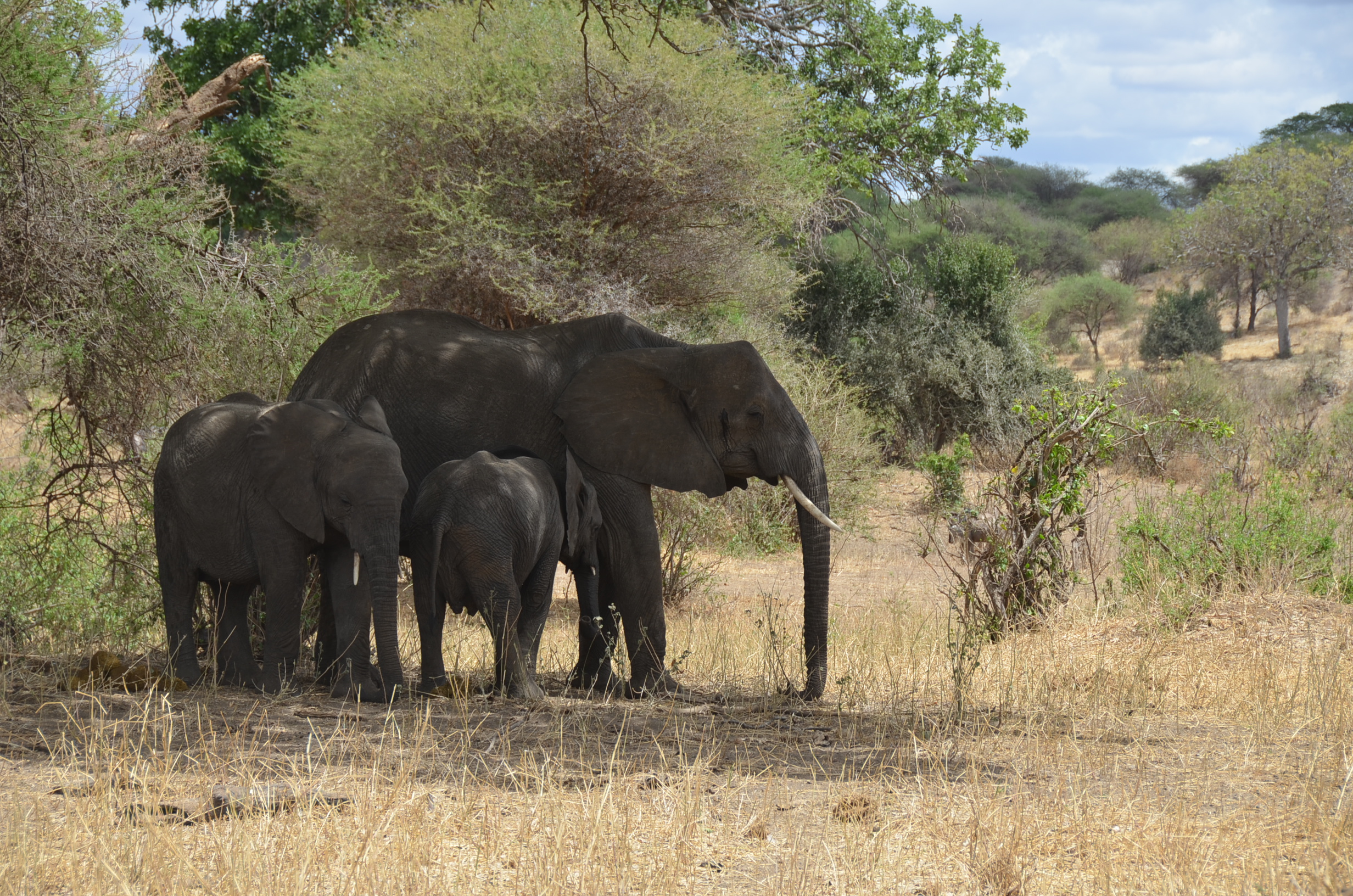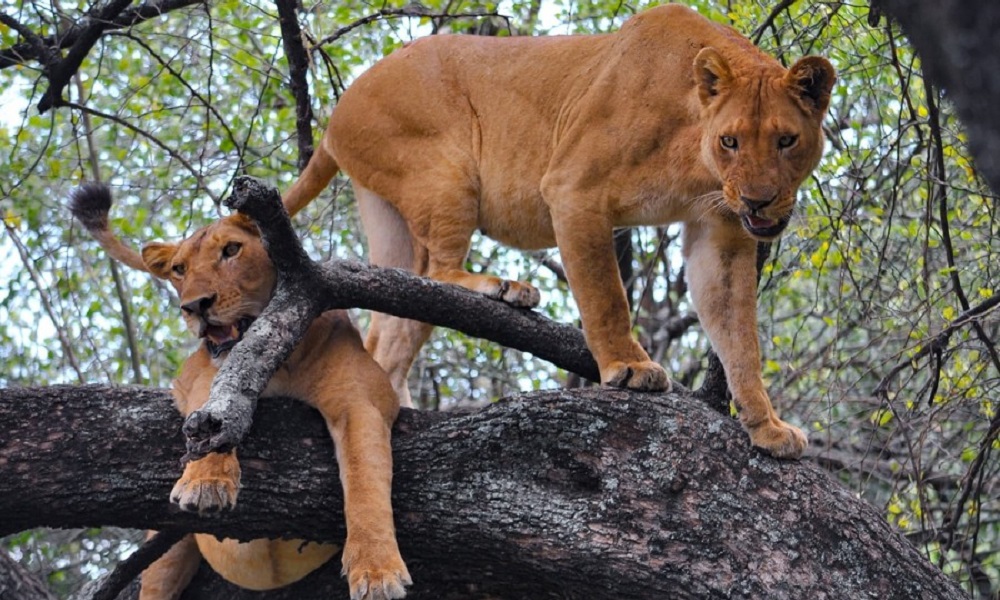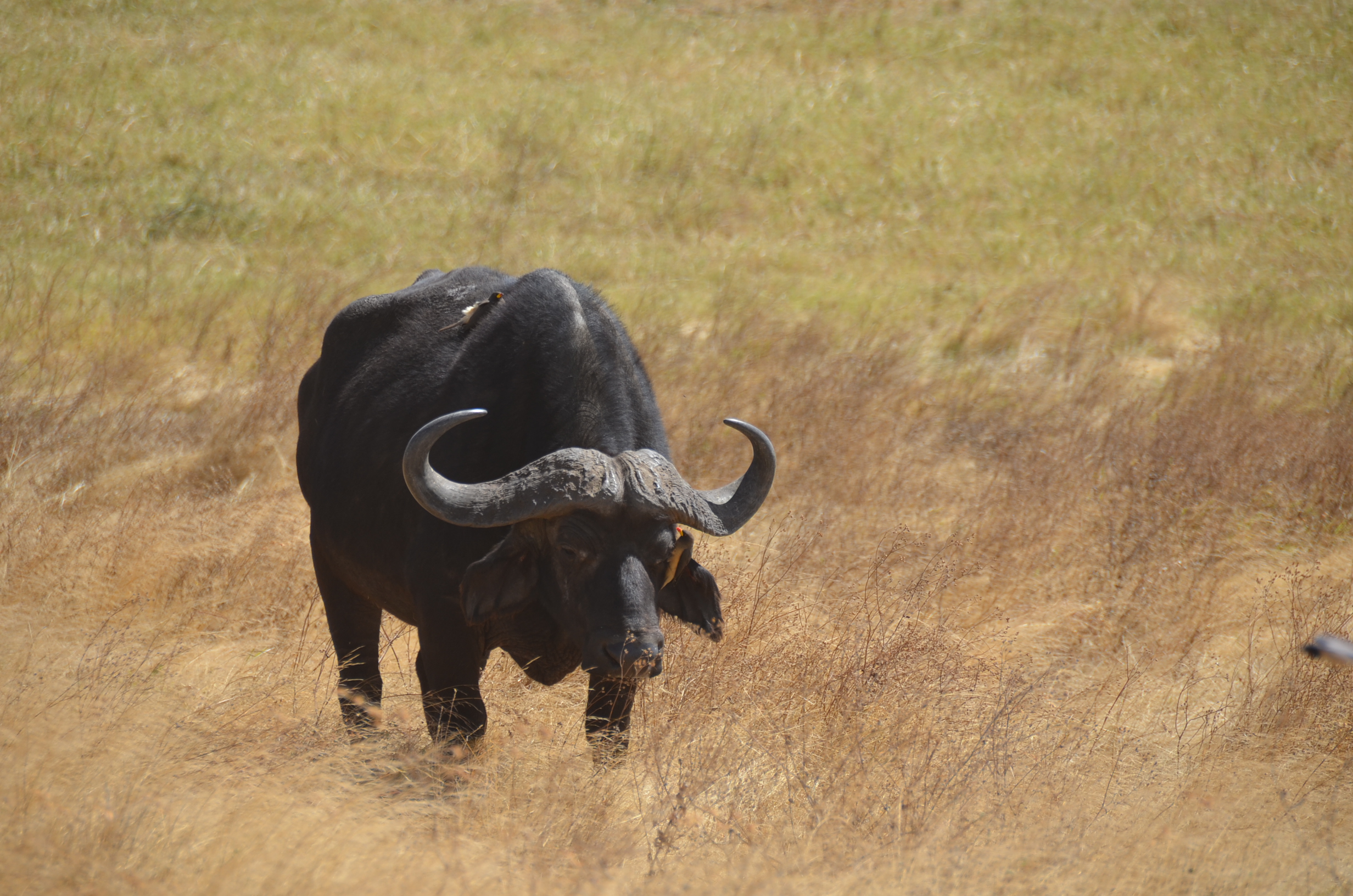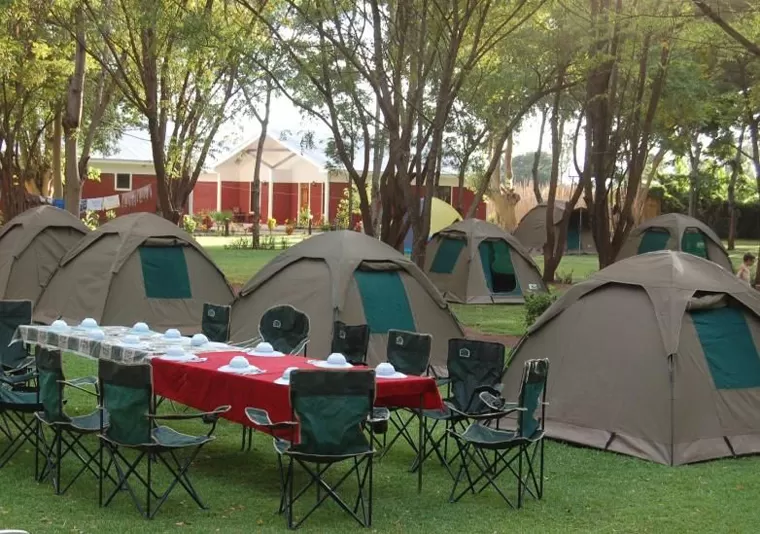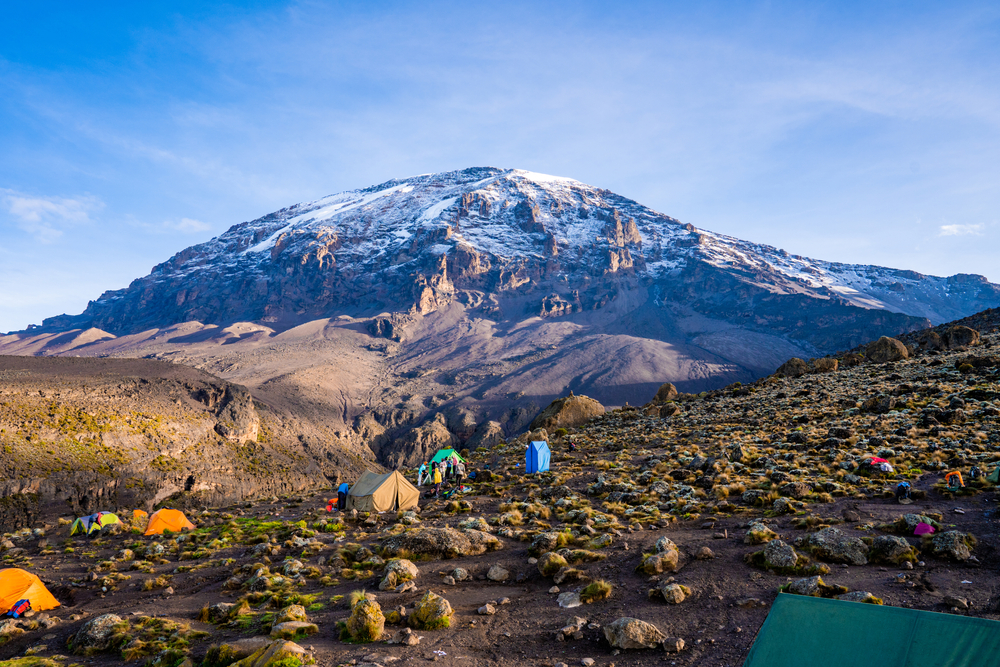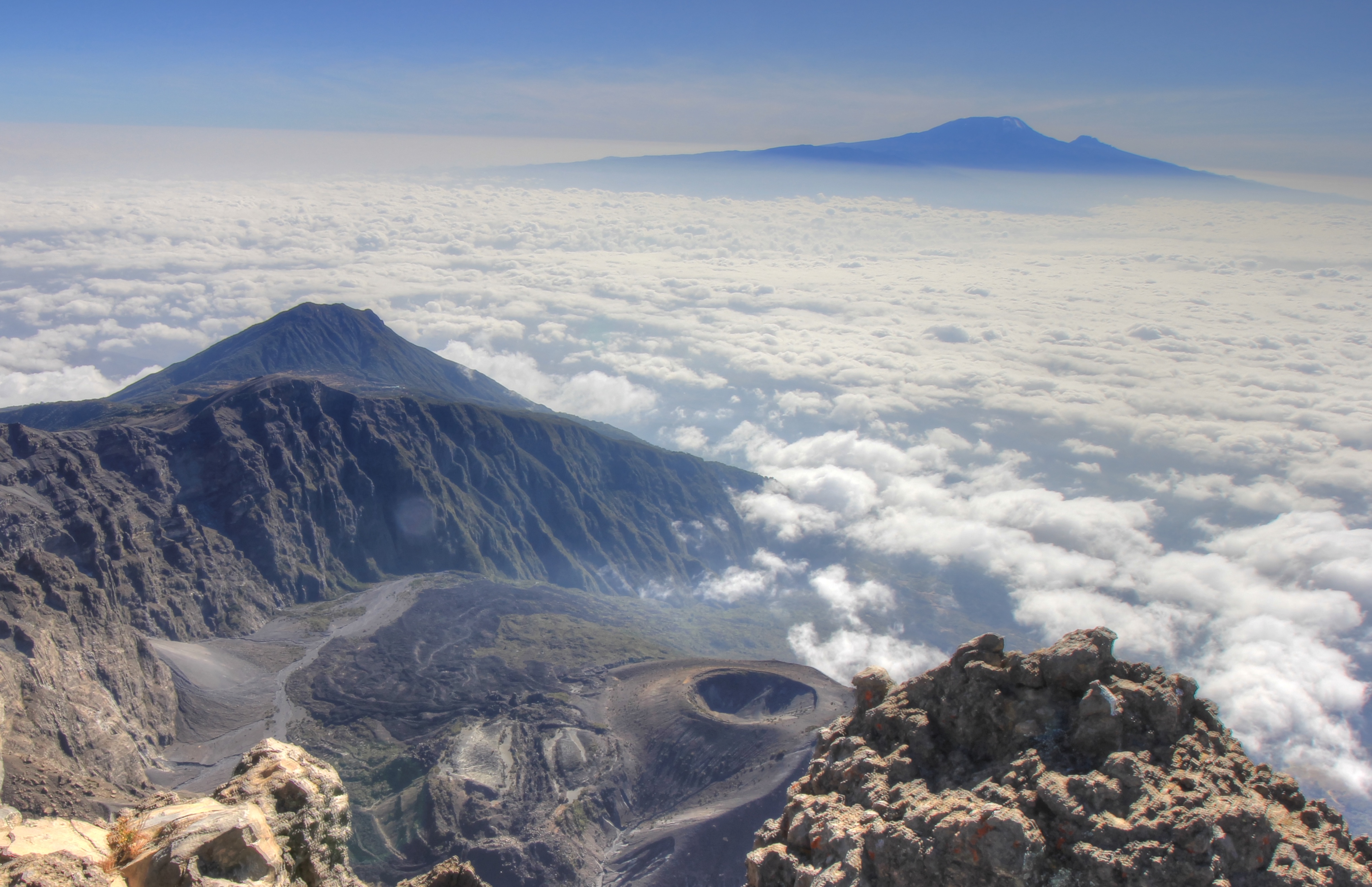TANZANIA NATIONAL PARKS
SERENGETI NATIONAL PARK
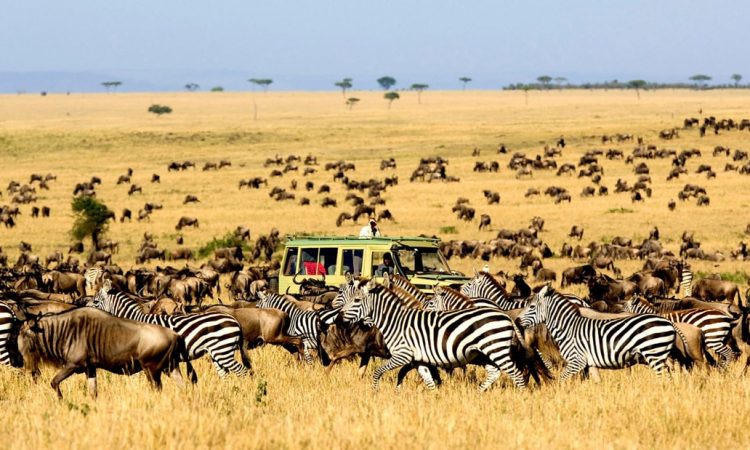
The Serengeti National Park is globally renowned for its abundance and variety of wildlife as well as high biodiversity. The Big 5 (lion, leopard, elephant, rhino, and buffalo) can all be experienced in the park.
Serengeti National Park is located in Tanzania and is part of the larger Serengeti ecosystem which covers 12,000 square miles (30,000 sq km) and includes several other game reserves. The national park itself covers an area of 5,700 square miles (14,750 sq km). It is a GANP Ambassador Park and runs contiguously with the Masai Mara in Kenya.
The area is comprised of grassland plains, savanna, riverine forest, and woodlands. Although the majority of the park is open plains, the elevation does vary from 3,000 to 6,000 feet (914 to 1,828 m). The lofty rock croppings spawn visions of the movie "Lion King," and it is possible you may even see lions on them.
The Serengeti, Ngorongoro Crater, and Mount Kilimanjaro are almost inseparable when it comes to traveling to Tanzania. Visitors will almost always experience the three of these together. Ngorongoro Crater and the Serengeti share the migrating wildebeest, zebra and impala herds.
NGORONGORO CRATER

The Ngorongoro Crater is literally a hole in the ground, formed when a giant volcano exploded and caved in on itself. Over time wind-blown sands and seeds built up on the shallow volcanic bed and a paradise was born.
Today the crater is home to a multitude of wildlife, attracted by the nutritious vegetation and sufficient water resources. Hosting a variety of eco-systems, from grasslands to forests, the Ngorongoro Crater truly is a natural wonderland.
There is no accommodation in the crater itself but there are lodges set on the crater rim with spectacular views of the crater floor. Game drives bring visitors into a wildlife spectacular. Cultural interaction with the Maasai can be experienced form the Ngorongoro Crater lodges and campsites in the area.
The Crater is the heart of the Ngorongoro Conservation Area which also includes the southern-most plains of the Serengeti and Olduvai Gorge. The Ngorongoro Conservation Area is a unique concept - where wildlife and humans utilise the land.
The Maasai people of Tanzania who live in the Ngorongoro Conservation Area are allowed to graze their cattle but are not allowed to cultivate crops on a commercial basis. Olduvai Gorge is considered the Cradle of Mankind for all the fossils that have been unearthed over the years - pointing to the region as the birthplace of humankind.
The Ngorongoro is a year round safari destination with great game viewing at all times. To combine the Ngorongoro with the Serengeti Migrations it is best to go between January and March when the herds are in the southern
plains of the Serenegti and spilling over into the Ngorongoro Conservation Area.
TARANGIRE NATIONAL PARK
Tarangire National Park lies to the south of the Masailands in Tanzania and is home to miles of African woodland, classic flat-topped acacias trees, ancient baobabs and large herds of elephants roaming the swamps of the Tarangire River and a brilliant variety of bird life.
Herds of up to 300 elephants scratch the dry river bed for underground streams, while migratory wildebeest, zebra, buffalo, impala, gazelle, hartebeest and eland crowd the shrinking lagoons followed by their tenacious predators. All of which can be seen on a Tarangire National Park safari.
With the presence of the Tarangire River, this park forms a sanctuary during the dry season for many migratory animals; as a result, Tarangire National Park holds the greatest concentration of wildlife outside the Serengeti and Ngorongoro ecosystem; with the addition of bulky pythons that climb trees, as do its resident’s lions and leopards.
LAKE MANYARA NATIONAL PARK
Lake Manyara National Park is one of Tanzania’s smallest parks and best known for spectacular flocks of almost 2 million flamingos that breed on the lake in summer. The park is also famous for its tree-climbing lions and the Masai giraffe, the tallest animal on Earth.
The best time to visit Lake Manyara National Park is during the summer months (November-April). You'll be able to view migratory birds like flamingos and migrating animals like wildebeest and zebra grazing down by the lake.
The park boasts 11 different ecosystems and one of the worlds highest densities of large mammals. Groundwater-fed forests of acacias thrive beneath the rocky escarpment of the Great Rift Valley and the alkaline lake creates a smorgasbord of marshland, seasonal grasslands and saltpans.
The waters of Lake Manyara shrink and swell depending on rainfall. Waters retract in the dry season and expand the areas of marshland, saline flats and edible grasses.
ARUSHA NATIONAL PARK
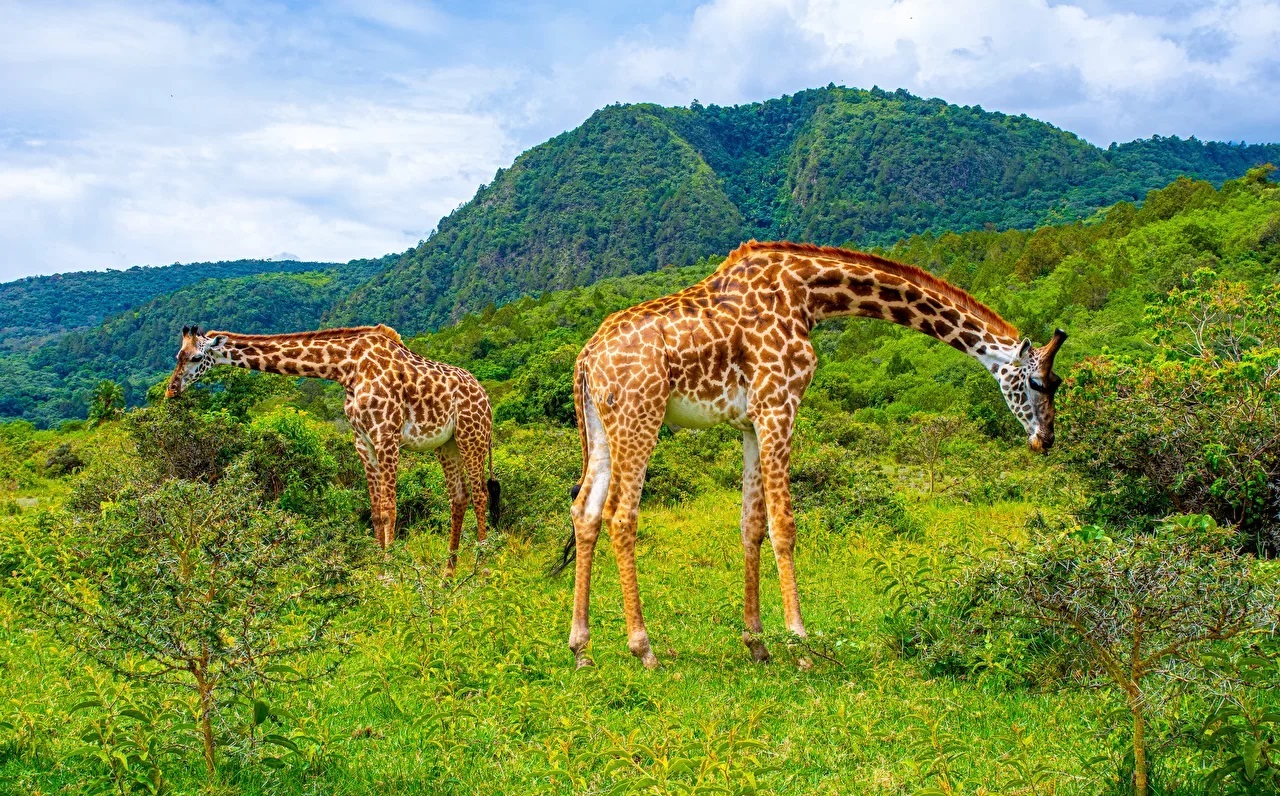
Arusha National Park Tanzania covering a land area 552 square Kilometers is located in the Northern part of Tanzania in the north eastern region of Arusha town which is a 40-minute drive from Arusha and approximately 60 km from Kilimanjaro International Airport.
Arusha National Park is a meager sized park with a lot of attractions to see and several activities to do. Endowed with varied ecosystems and spectacular views of Mt. Meru, the crater that gives the region its name, diverse wildlife that includes herbivores such as elephants, hippos, buffalo, zebra, and even the occasional wildebeest. Arusha National Park doubles as well as the home to the largest population of giraffes and if you love watching this long necked beautiful animals, Arusha National Park in Northern Tanzania is best venue for you. Not only the above are great about this place but it is also a perfect place for stretching legs doing walking safaris and canoe safaris.
Arusha National Park broadly is also made up of the variety of landscapes, ranging from open savannah through acacia scrubland to rainforest and, eventually, to alpine conditions on the higher reaches of Mt. Meru.
Arusha National park includes the slopes, summit, and ash cone of Mt. Meru that can be trekked in three days to the summit, the Momela Lakes, Ngurdoto Crater, and the lush highland forests that blanket its lower slopes. Game viewing around the Momela Lakes is at a laid-back and quiet pace, and while passing through the forest many visitors stop to search for troupes of rare Colubus monkeys playing in the canopy.



